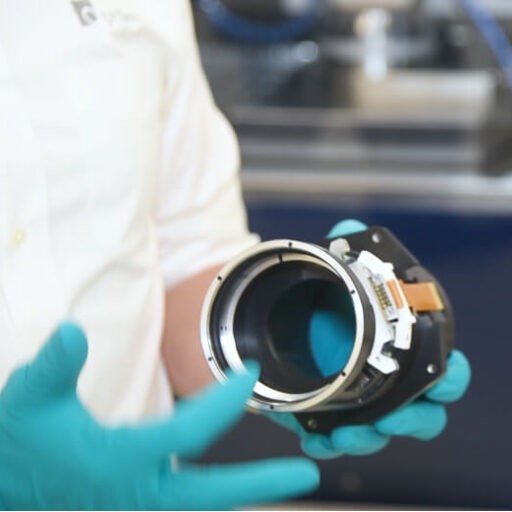Presented by Nathan Wallace, Director of Engineering Services, Optikos Corporation
About This Webinar
In today’s competitive and cost-conscious environment, optical systems must do more than perform; they must scale, endure, and deliver value throughout their lifecycle. This webinar explores how applying Design-for-Excellence (DfX) principles early in development can transform the way optical systems are conceived, built, and supported in the field. Viewers will gain insight into how DfX — an engineering approach that emphasizes performance, cost-efficiency, reliability, and manufacturability — can be tailored to the unique challenges of optical product development. This webinar will help to explain why DfX is most effective when it begins at day one of the design process, not as an afterthought.
Key topics include:
- Define DfX in the context of high-precision optical engineering.
- Learn why designing for serviceability is a powerful, but often overlooked, ROI driver.
- Master modularity to simplify development, enhance prototypes, and enable product scaling.
- Shorten time to market and reduce the total cost of ownership.
Whether you are designing high-precision optical instruments, imaging systems, or ruggedized solutions for aerospace and medical markets, this session will offer actionable strategies to improve product outcomes, reduce total cost of ownership, and shorten time to market. Join Nathan, as he shares real-world lessons from decades of optical system design and explore how a DfX mindset can future-proof your next product.

Who should attend:
This session is intended for professionals across the full optical product lifecycle, including engineers, managers, and executives. Optical engineers and system designers will learn how to leverage DfX during early architecture decisions to balance performance, manufacturability, cost, and reliability. Mechanical and systems engineers working on optomechanical integration will gain insight into designing housings and supports that ensure scalability, thermal stability, and long-term maintainability. Product managers and program leads will discover how design-phase choices directly affect ROI, serviceability, and time to market. Manufacturing and test engineers will benefit from understanding how DfX reduces costly late-stage changes and enables volume scaling through assembly- and test-friendly designs. Field service, reliability, and lifecycle engineers will discover how “designing for serviceability” minimizes downtime and lowers the total cost of ownership while feeding valuable feedback into the design loop. Business development and technical sales professionals will learn how DfX can strengthen product positioning as scalable, lower-risk, and higher-value to sophisticated buyers. Finally, executive leadership — including CTOs and vice presidents — will gain a strategic perspective on how adopting DfX across teams enhances long-term quality and cost control.
About the Presenter:
Nathan Wallace leads the Engineering Services (ES) department at Optikos Corporation, where he oversees the development of advanced optical systems across a wide range of applications. He began his career at Dimensional Photonics, a startup focused on structured light scanning technology, which was later acquired by Danaher Corp. There, he was part of the core team that successfully launched a dental scanner product in 2013. Wallace joined Optikos in 2014 as an optomechanical engineer, contributing to the design and development of complex optical systems, including aerial imaging lenses, microscopy, fluorescence imaging systems, and custom optical metrology instrumentation. His work bridges mechanical engineering with optical performance, supporting projects from concept through production. He holds a bachelor’s degree in mechanical engineering from the University of Pittsburgh and a master’s degree in optical sciences from the University of Arizona.



